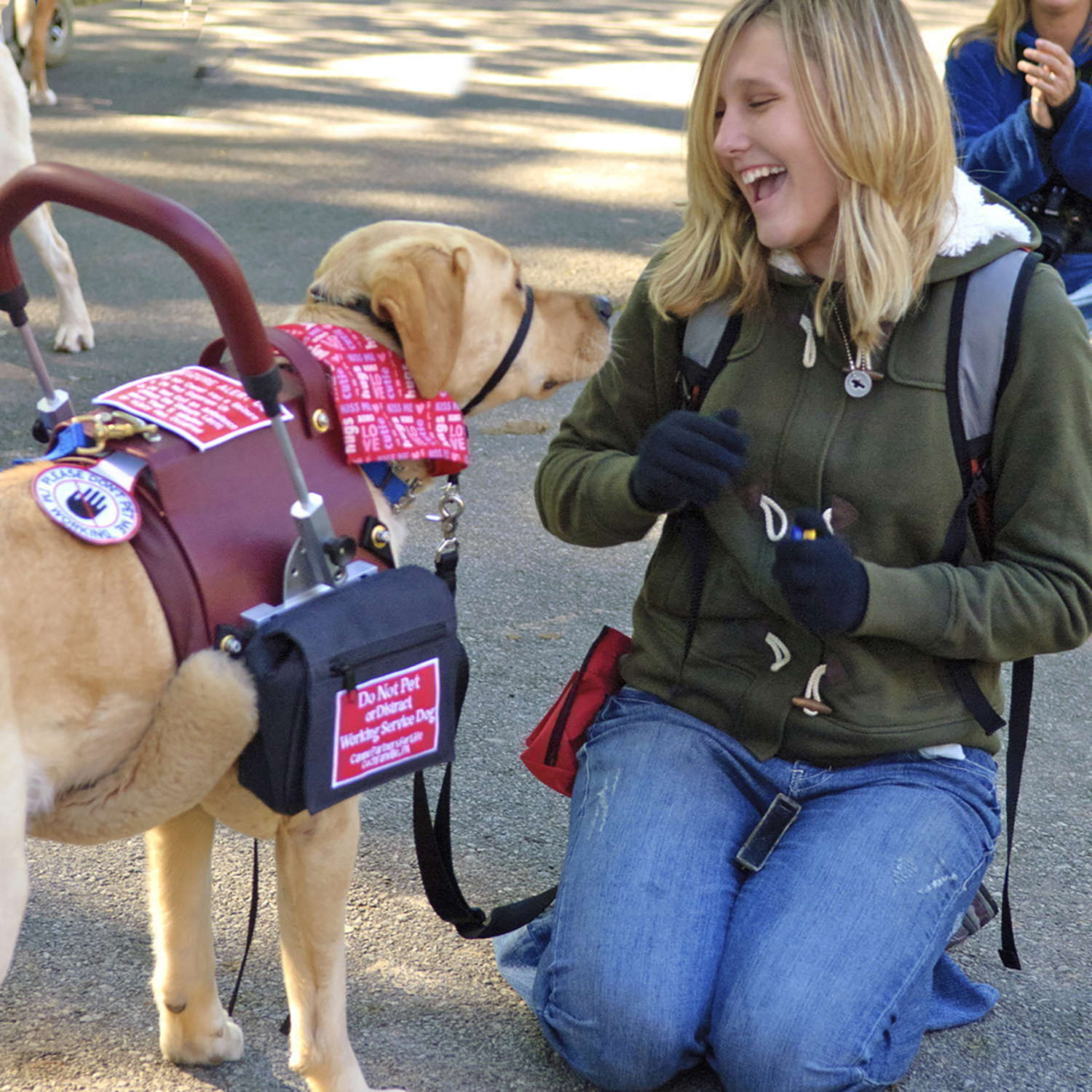All of NIA's operations are dedicated to serving and uplifting nonprofits.
Nonprofits Insurance Alliance (NIA) has proudly supported nonprofits for 35+ years and worked to increase the capability of the sector.
Through its financial strength, comprehensive benefits for members, data and research, and partnerships, NIA continues to ensure that nonprofits have their own insurance carrier that operates so members can continue their important services.

Insured by NIA:
Canine Partners for Life
Cochranville, PA
NIA’s Origins
During the insurance crisis of the mid-1980s, many charitable organizations could not obtain liability insurance — at any price.
Commercial insurers routinely cancelled or non-renewed liability insurance policies for nonprofit programs, including domestic violence shelters, physical therapy for disabled children, animal rescues, after-school and arts programs for troubled teens, and rehabilitation centers for chemically dependent adults.
Valuable services to the community were curtailed or altogether eliminated as social service nonprofits, unable to show proof of insurance, were forced to cease operations due to the unverified assumption that nonprofits were too “high risk” and poorly managed to insure.
To address the crisis, Pamela E. Davis proposed a nonprofit insurance risk pool in her thesis at UC Berkeley’s Graduate School of Public Policy, arguing that the only viable solution was for nonprofits to work together to insure themselves.
The thesis resulted in the formation of NIAC
(Nonprofits Insurance Alliance of California), then ANI (Alliance of Nonprofits for Insurance, RRG).
With the support of major foundations, NIA entered the market to exclusively serve the needs of 501(c)(3) nonprofits and quickly grew through the support of a solid partnership with brokers.
“Part of NIA”
NIAC and ANI are member-governed charitable risk pools whose sole purpose is to insure and serve the 501(c)(3) nonprofit sector.
NANI (National Alliance of Nonprofits for Insurance) provides reinsurance, and AMS (Alliance Member Services) staffs the four organizations of the group.
Together, those form Nonprofits
Insurance Alliance (NIA).
Continuing Need
While there are more for-profit insurance
companies providing insurance to the sector today, NIA is the only multi-line insurance group that has 501(c)(3) nonprofit charitable status itself.
NIA is the nonprofit sector’s own insurance company: Everything is done solely for the benefit of supporting the sustainability of nonprofits.
This benefits the nonprofit sector beyond providing fair and equitably priced insurance products and risk management
services: NIA also works to developing the single best database about claims against nonprofits to enable us to continuously improve pricing over time.
The NIAC Loan Fund is available for loans up to $50,000, secured only by the nonprofit’s assets, for California members to prove the financial feasibility of underwriting small yet impactful loans to the nonprofit sector.
And Blue Avocado, the online magazine for nonprofits, relays valuable tips and tools to the sector about all topics related to managing a nonprofit.
Additionally, NIA creates practical knowledge and tools from the information learned about accidents and injuries at nonprofits.
NIA believes that risk management is the cornerstone of accountability and that NIA is uniquely positioned to help the nonprofit sector address calls for accountability through robust risk management plans.
Above all else, NIA considers the relationship with its members as a partnership and works to handle claims in a manner that is sensitive to a nonprofit’s position of trust in their communities.
Financial Highlights
Nonprofits Insurance Alliance (NIA) currently insures 27,000+ nonprofits.
AM Best issues all NIA organizations a Long-Term Issuer Credit Rating (Long-Term ICR) of a+ (Excellent) and affirmed the insurance entities’ Financial Strength Rating (FSR) of A- (Excellent).
NIA’s 2024 financial results:
- Premium: $345.8 million
- Surplus: $179.9 million
- Assets: $1 billion
Dividends
Whenever possible, NIA reinvests in the
nonprofit sector through generous dividends.
NIA’s dividend plan issues funds to member-insureds based on premiums
paid during the dividend period, length
of continuous coverage, and favorable
claims experience — which NIA’s risk management services help members to create.
Since 2007, NIA has returned a total of $50.1 million in dividends to its members.
Affiliations
One of NIA’s many benefits to the nonprofit
sector is its partnership with organizations
that support nonprofits.
NIA’s affiliations are resources for members for information, tech support, and deep discounts.
Common broker tools.
These are the most common tools for NIA-appointed brokers.
Your questions answered.
Great job on making it this far. Have some final questions? Here are the top questions NIA hears from brokers. There’s more where this came from, too.
Yes! In fact, NIA writes many organizations that are just starting out.
Just confirm you’ve applied for your organization’s 501(c)(3) status by submitting to NIA a copy of your completed application and proof of payment to the IRS.
Note: You will be required to have your 501(c)(3) status within one year of purchasing coverage.
Yes. Nonprofits Insurance Alliance (NIA) is conservatively reinsured by a group of highly rated reinsurers.
Go to the Claims page to report a claim.
There are many different types of nonprofit organizations, but only federally tax-exempt 501(c)(3) nonprofits qualify for membership with Nonprofits Insurance Alliance (NIA).
NIA insures many types of nonprofits. Find out more about NIA’s appetite.
If you’ve got a brand-new nonprofit, or if you’re thinking about starting one and just doing research for your budget, you may be interested in the minimum annual premiums for all the insurance coverage that NIA offers.
Your insurance quote will most likely differ, as your premium will be entirely defined by your nonprofit’s own level of risk.
Note: These minimum numbers are provided for informational purposes only.

